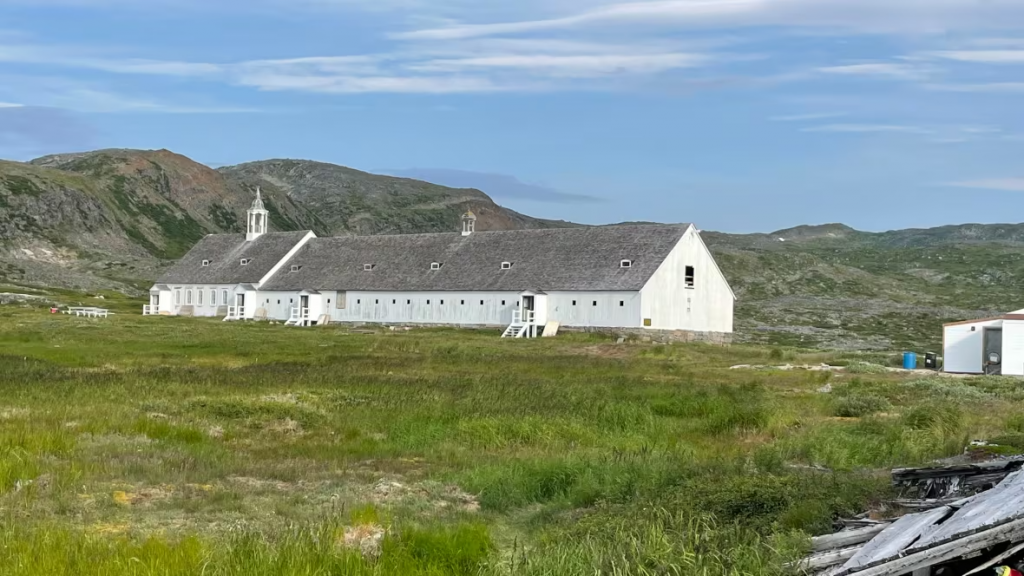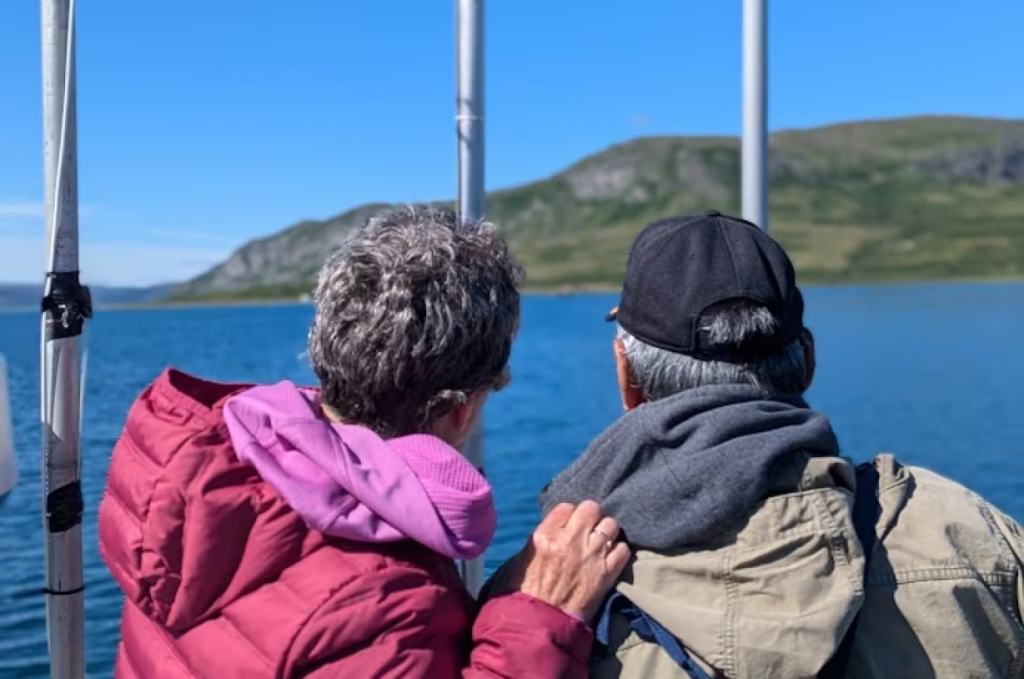Canada News
Decades after being forced to leave, these Labrador Inuit got to return home

Around 40 Inuit elders, plus dozens more support crew from the Nunatsiavut government and the Royal Canadian Navy were on board the reunion trips to Nutak and Hebron in July 2024. (Submitted by Sabrina Nash/Royal Canadian Navy via RCI)
By Samuel Wat, RCI, CBC News
Around 7,500 Inuit were evicted from Nutak and Hebron in the late 1950s
Inside a church in Hebron with a rock in hand, Silpa Obed sat in a circle among other evictees from the community.
That’s where she released all the emotions she had bottled up for decades. She said she still remembers the sound of gunshots being fired at those who didn’t want to leave.
“After so many years, I didn’t think I was so full of anger and resentment, but my body couldn’t hold it. I just had to share it,” the 68-year-old elder said.
She’s among roughly 40 Inuit elders part of a trip to Hebron and Nutak in northern Labrador last month, organized by the Nunatsiavut government and the Royal Canadian Navy, with funding from the Arctic Inspiration Prize.
For some, this was the first time they’ve been back since they were evicted as children.
Lena Onalik’s grandparents, on both sides of her family, were displaced from Hebron and Nutak/Okak Bay. So being part of the organizing committee for this reunion was personal to her.
“Many of these people were children when they were forced to leave. Now they’re going back as elders,” Okalik said.
“It’s been a very healing journey for people, and has really brought out the child in them.”

Around 7,500 Inuit were forced out of their homes from Nutak and Hebron in the late 1950s. In Hebron, officials made the announcement inside a church, where people couldn’t protest.
The provincial government ordered those relocations to consolidate northern communities in larger centres down south.
But it caused a painful loss to the Inuit way of life.
Pain not talked about for years
Sarah Townley was just three months old when she was pushed out of Hebron, though her parents didn’t talk about that experience until she was a teenager.
“It was only afterwards that I started to realize why they were hurting so much, and why they had started drinking, and why many people started getting into trouble,” Townley said.
“They were missing all kinds of food, like wild food, because we never had a hunting area in Makkovik.”

It was a similar story for Onalik’s grandparents. Overtime, she pieced together parts of her family history.
One such story passed onto her was how her grandmother was sent to Saint Anthony, N.L., to get treatment for her broken hip, where she contracted tuberculosis.
Upon her release, she found out her mother had passed away and her family was no longer in Hebron.
Hebron and Nutak today
Sabrina Nash, strategic planning advisor for the Royal Canadian Navy, still recalls the poignant feeling of standing next to the elders, as they surveyed their former homes in Nutak.
“It’s [the relocatee’s] grandparent’s house. The foundation is still very visible, and her grandmother’s tombstone is still there.”
“They’re coming back home, but nobody’s there.”

If there’s one thing Nash has taken away from the trip, it’s resilience.
“Those families were forced into situations that were not their decision … but still there’s a joy and gratefulness in their souls that just resonates,” she said.
Despite having returned to Hebron several times, Sarah Townley always discovers something new about her former home.
“I used to hear place names so I started going to those places. Then I started realizing how beautiful and vast and how there was so much wildlife,” she said.
Being there with other elders helped her find even more peace.
“It makes you want to share what you have seen and what our parents went through.”





















